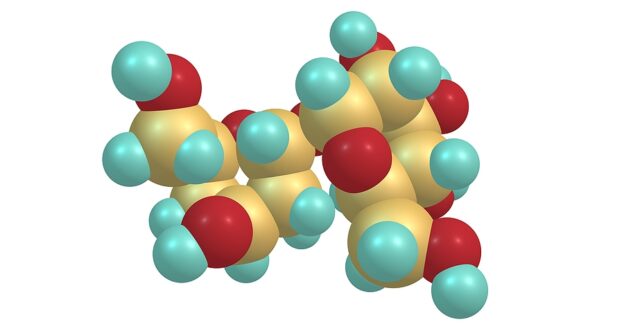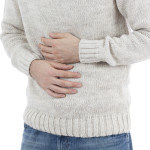By David Blyweiss, M.D., Advanced Natural Wellness
April 4, 2022
In the March 30 issue of Advanced Natural Wellness you learned about the impact certain foods have on your gut microbiome; and the impact your gut microbiome has on your health.
Today I want to alert you to a little-known sugar that can lead to a dreadful condition called Clostridium difficile. This is a bacterial infection that occurs when the gut microbiota gets out of whack, particularly after the use of antibiotics.
Now, back in the1980’s and 1990’s, C. difficile wasn’t really much of a problem. It was easily treatable.
But once large amounts of a sugar additive called trehalose entered our food supply in 2000, two specific strains of C. difficile suddenly started to cause major outbreaks. The strains proved to be much more toxic than previous strains, and produce toxins for longer periods of time. At the same time, they are largely resistant to treatment.
As a result, cases flourished, and the severity of the disease became much more life threatening. Even fatal. Around a half million people in the U.S. have C. difficile each year. And about 29,000 patients have fatal outcomes within 30 days of the initial diagnosis.
Rise of Virulent C. difficile Linked to Food Additive
I think one of the most disturbing aspects of the trehalose/C. difficile connection is that, historically, C. difficile was considered a healthcare acquired infection that occurred in older folks. Today nearly half cases of C. difficile are occurring outside of the healthcare environment, and increasing among younger patients and people who haven’t been exposed to antibiotics.
MD Exposes the Hidden Danger to Your Eyes

When your eyesight starts to fail, it's a real problem. Suddenly you can't go to the grocery store... you can't get to the doctor if you have an emergency... you can't meet your friends for dinner…
Your "regular" doctor doesn't have time to keep up with the latest research. And the same goes for eye doctors. They go to school to learn how to fit you for glasses and contacts, but have no way of preventing the damage and loss of eyesight that threatens your freedom and independence.
Let me show you something that explains a LOT about how your eyes work.
In my FREE Special Report, I'll show you a HUGE, untapped resource for your eyes that safely and naturally restores clear, effortless eyesight.
Click here to get started...
If you haven’t heard of trehalose before, it’s a compound used in many foods as a sweetener, texturizer, thickener, stabilizer and flavor enhancer. Large quantities of it were introduced to our food supply during the early 2000s.
Since it also naturally occurs in shellfish, mushrooms, yeast and honey, the FDA lists it as “Generally Recognized as Safe” (GRAS).
What the FDA doesn’t take into consideration is the huge quantities of trehalose we’re consuming.
The amount of trehalose we get from natural foods amounts to less than .3 grams per day. The amount of it we’re getting as a food additive is estimated to be about 34.43 grams per day.
That’s a 114% increase! That gives these deadly trehalose-loving strains of C. difficile plenty of fuel to feed on and multiply.
Adding so much of an unresearched compound to our food supply is bound to have multiple effects on the gut microbiome. It is quite clear that this is another of those enormous mistakes that keep happening over and over again to destroy our health.
The Best Way to get Trehalose out of Your Diet
We’ve long known that the use of any type of antibiotic greatly increases your chances of acquiring a C. difficile infection. So does the use of certain antacid drugs like proton pump inhibitors (PPIs) and H2-blockers. Your risk also increases if you are admitted to the hospital.
But this is a whole new ballgame. The best thing you can do is get trehalose out of your diet.
It’s hard to know exactly what foods contain trehalose, because it is listed on packages as a “natural flavoring.” So it could be in many foods where it might benefit the profile of a food.
Are You Suffering From...
- Love handles and a pot belly
- Romance that isn't what it used to
- Forgetfulness and inattention
- Low (or no) strength and endurance
- A sex drive that's shifted into neutral...or worse
If so...you may have Mature Male Burnout. Click here to discover more about this unique condition and what you can do about it.
This includes in all sorts of foods you would never expect a sugar to be in. It’s added to meats to improve taste and juiciness. It’s used in frozen foods to reduce freezer damage.
Trehalose extends the shelf life of baked goods and reduces sodium content in any number of canned, packaged and frozen foods. This stuff is even used to improve the aroma of other foods and beverages.
Your best bet to avoid trehalose, maintain a healthy gut microbiome and slash your risk of a C. difficile infection is to eat fresh, natural foods as often as possible.
I recommend buying organic produce whenever you can. I also advise my patients to always choose grass-fed meat, pasture-raised poultry and wild-caught fish for your proteins.
In particular, I suggest eating a healthy, Mediterranean style diet. This way of eating is associated with a healthy and well-balanced gut microbiome. It’s loaded with healthy fats and high-quality proteins. Red meat consumption is low, fish consumption is high.
More importantly, these folks eat large amounts of high-fiber plant foods every day. This includes things like vegetables, beans, fruits and nuts. (People who eat the most of these foods have a much healthier diversity of gut microbiota. Plus, these foods help protect the lining of your gut.)
In the event that you or someone you know does develop a severe C. difficile infection that resists treatment, I suggest checking into the possibility of a Fecal Microbiota Transplant. This basically involves the insertion of a small, diluted sample of healthy donor feces into the colon.
Scientists are also perfecting oral capsules made by processing feces until they contain only bacteria. They have no taste or scent, and thus far appear to be very effective.
I know that both of these options sound disgusting. But they can work wonders when it comes to helping patients with severe or repeat C. difficile infections.
SOURCES:
Collins J, Danhof H, Britton RA. The role of trehalose in the global spread of epidemic Clostridium difficile. Gut Microbes. 2019;10(2):204-209.
Freeman J, Bauer MP, Baines SD, et al. The changing epidemiology of Clostridium difficile infections. Clin Microbiol Rev. 2010;23(3):529-549.
Guh AY, Mu Y, Winston LG, et al. Trends in U.S. Burden of Clostridioides difficile Infection and Outcomes. N Engl J Med. 2020;382(14):1320-1330.
Lessa FC, Mu Y, Bamberg WM, Beldavs ZG, Dumyati GK, Dunn JR, Farley MM, Holzbauer SM, Meek JI, Phipps EC, Wilson LE, Winston LG, Cohen JA, Limbago BM, Fridkin SK, Gerding DN, McDonald LC. Burden of Clostridium difficile infection in the United States. N Engl J Med. 2015 Feb 26;372(9):825-34.
Mada PK, Alam MU. Clostridioides Difficile. [Updated 2022 Jan 31]. In: StatPearls [Internet]. Treasure Island (FL): StatPearls Publishing; 2022 Jan.
Trifan A, Stanciu C, Girleanu I, Stoica OC, Singeap AM, Maxim R, Chiriac SA, Ciobica A, Boiculese L. Proton pump inhibitors therapy and risk of Clostridium difficile infection: Systematic review and meta-analysis. World J Gastroenterol. 2017 Sep 21; 23(35): 6500–6515.
Tleyjeh IM, Abdulhak AB, Riaz M, Garbati MA, Al-Tannir M, Alasmari FA, Alghamdi M, Khan AR, Erwin PJ, Sutton AJ, Baddour LM. The association between histamine 2 receptor antagonist use and Clostridium difficile infection: a systematic review and meta-analysis. PLoS One. 2013;8(3):e56498.
De Filippis F, Pellegrini N, Vannini L, Jeffery IB, La Storia A, Laghi L, Serrazanetti DI, Di Cagno R, Ferrocino I, Lazzi C, Turroni S, Cocolin L, Brigidi P, Neviani E, Gobbetti M, O’Toole PW, Ercolini D. High-level adherence to a Mediterranean diet beneficially impacts the gut microbiota and associated metabolome. Gut. 2015 Sept;65(11):1812-1821.
Kao D, Roach B, Silva M, Beck P, Rioux K, Kaplan GG, Chang HJ, Coward S, Goodman KJ, Xu H, Madsen K, Mason A, Wong GK, Jovel J, Patterson J, Louie T. Effect of Oral Capsule- vs Colonoscopy-Delivered Fecal Microbiota Transplantation on Recurrent Clostridium difficile Infection: A Randomized Clinical Trial. JAMA. 2017 Nov 28;318(20):1985-1993.
Du C, Luo Y, Walsh S, Grinspan A. Oral Fecal Microbiota Transplant Capsules Are Safe and Effective for Recurrent Clostridioides difficile Infection: A Systematic Review and Meta-Analysis. J Clin Gastroenterol. 2021 Apr 1;55(4):300-308







